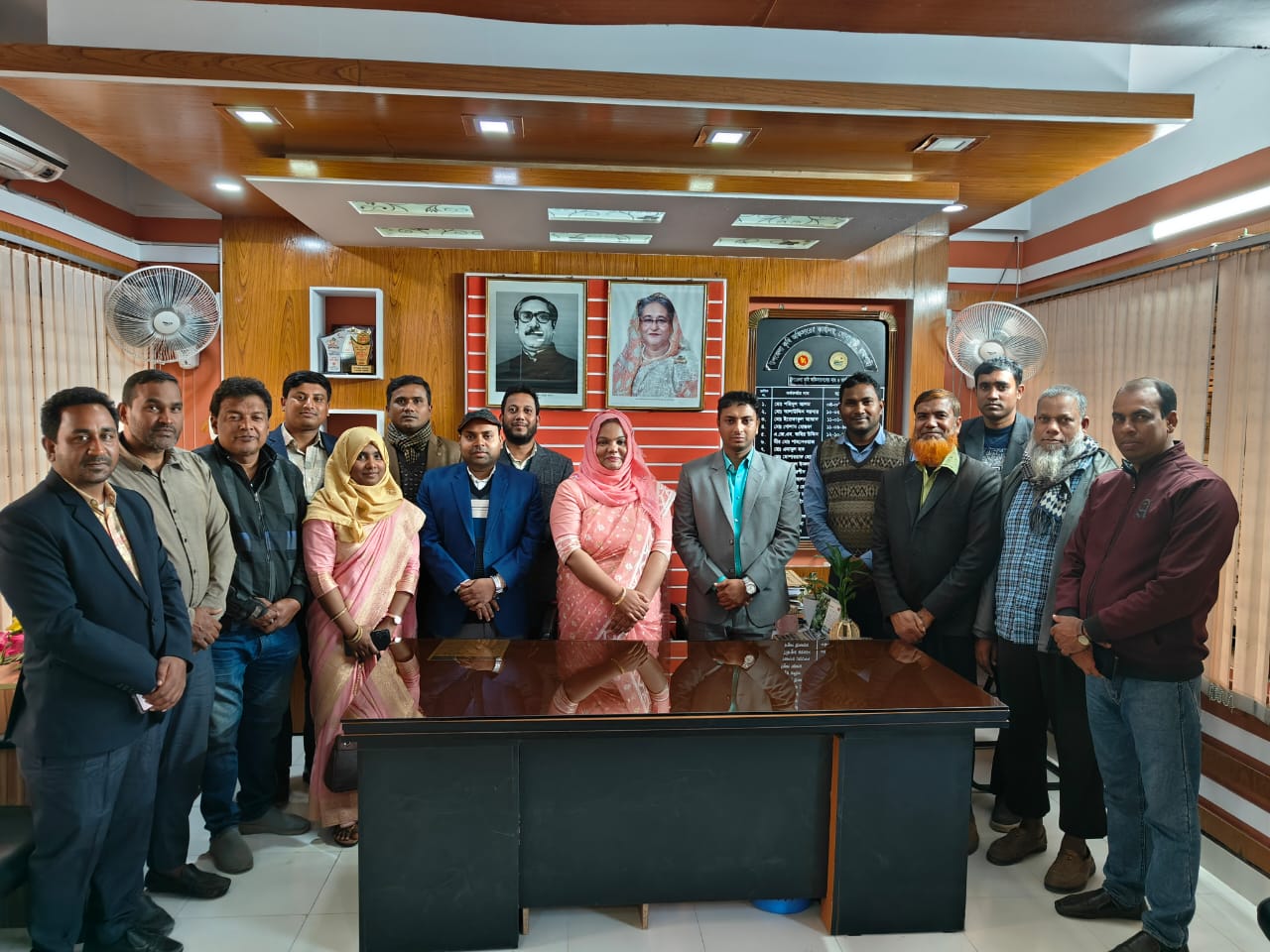- About Us
-
Our services
Inspection
-
Higher Offices
Divisional/District Office
Ministry / Department
- E-Service
- Gallery
- Contact
- Opinion & Suggestion
মেনু নির্বাচন করুন
- About Us
-
Our services
Services
Inspection
-
Higher Offices
Divisional/District Office
Ministry / Department
- E-Service
- Gallery
-
Contact
Office Contact
Communication Map
-
Opinion & Suggestion
opinion and feedback
Main Comtent Skiped
at a glance
welcome
Upazila Agriculture Office
Godagari, Rajshahi.
Although the Department of Agriculture has been operating since the post-independence period, in the post-independence period, in 1982, various Departments of Agriculture were merged and emerged as "Department of Agriculture Extension". The Upazila Agriculture Office is an upazila level office under the control of the Soil Wing, the largest branch of the Department of Agriculture Extension. This office is mainly responsible for encouraging farmers about crop management technology. Also, this department helps farmers in almost all tasks including getting fertilizers, pesticides, agricultural machinery, agricultural loans. This department is also responsible for the implementation of rehabilitation programs provided by the government in case of crop damage due to natural disasters.
Although the extent of modern agricultural expansion in Bangladesh is half a century, it has an eventful history of more than a hundred years behind it. To deal with the terrible famine of 1862-65, the Famine Commission recommended the establishment of the first Department of Agriculture. Consequently, the Department of Agriculture was born in 1870 as part of the Revenue Department. Later, in 1906, a separate Department of Agriculture was established. At the same time, the agricultural farm was established in Manipur (present Jatiya Sangsad Bhavan area) in Dhaka. Which is spread over 1000 acres of land. The farm is attached to the Department of Agriculture. In 1909, a laboratory for agricultural research was established on the farm. In 1914, one Agricultural Extension Officer was appointed in each of the then districts. Among them there was no officer with knowledge in agricultural science. Among them there was no officer with knowledge in agricultural science. Later, in 1943, the first graduates from Bangladesh Agricultural College joined the Department of Agriculture and since then the work of agricultural extension actually started.
Farmers' extension education and development activities started in 1950 through the then East Pakistan Agricultural and Industrial Development (VAID) scheme, followed by the establishment of Directorate of Plant Conservation in 1956, BADC in 1961, AIS in 1962, DAME and DARE in 1970, but agriculture and farmer development did not No planned opportunity was created. After independence in 1972, with the aim of strengthening agricultural extension activities, separate crop-based institutions were created namely Cotton Development Board, Tobacco Development Board, Horticulture Board and in 1975, Agriculture Department (Jute Production), Agriculture Department (Extension and Management). But different extension messages and activities for the same farmer have negative impact at the field level. Consequently, in 1982 six agencies engaged in crop technology extension namely DA(E&M), DA(JP), Directorate of Plant Protection, Horticulture Board, Tobacco Development Board and SARDI were merged to form the present Directorate of Agricultural Extension. The Department of Agriculture has served the country's agriculture and farmers with great success and reputation through the ``Training and Inspection (T&V)'' system introduced from 1977 to 1990 and through the Party Extension System since 1990. Implementation of the New Agricultural Extension Policy (NAEP) began in 1996 to provide planned and cooperative extension services. At present the Directorate of Agricultural Extension is conducting departmental activities comprising of 8 wings. "The responsibility of the Department of Agricultural Extension is to provide effective and efficient extension services to farmers of all categories based on their needs so that they can contribute to sustainable agricultural and socio-economic development by making the best use of their resources."
Site was last updated:
2024-11-10 11:26:54
Planning and Implementation: Cabinet Division, A2I, BCC, DoICT and BASIS









